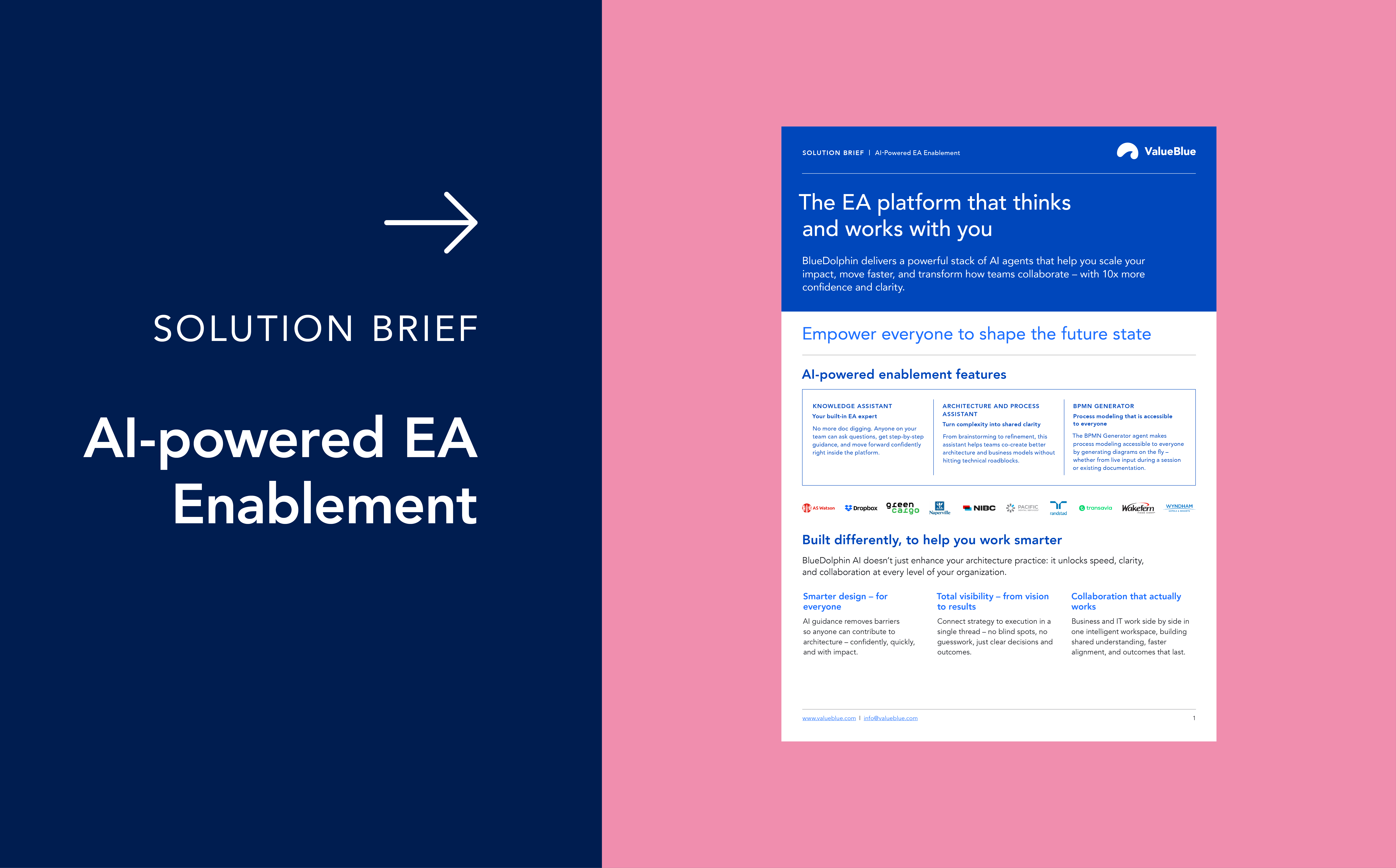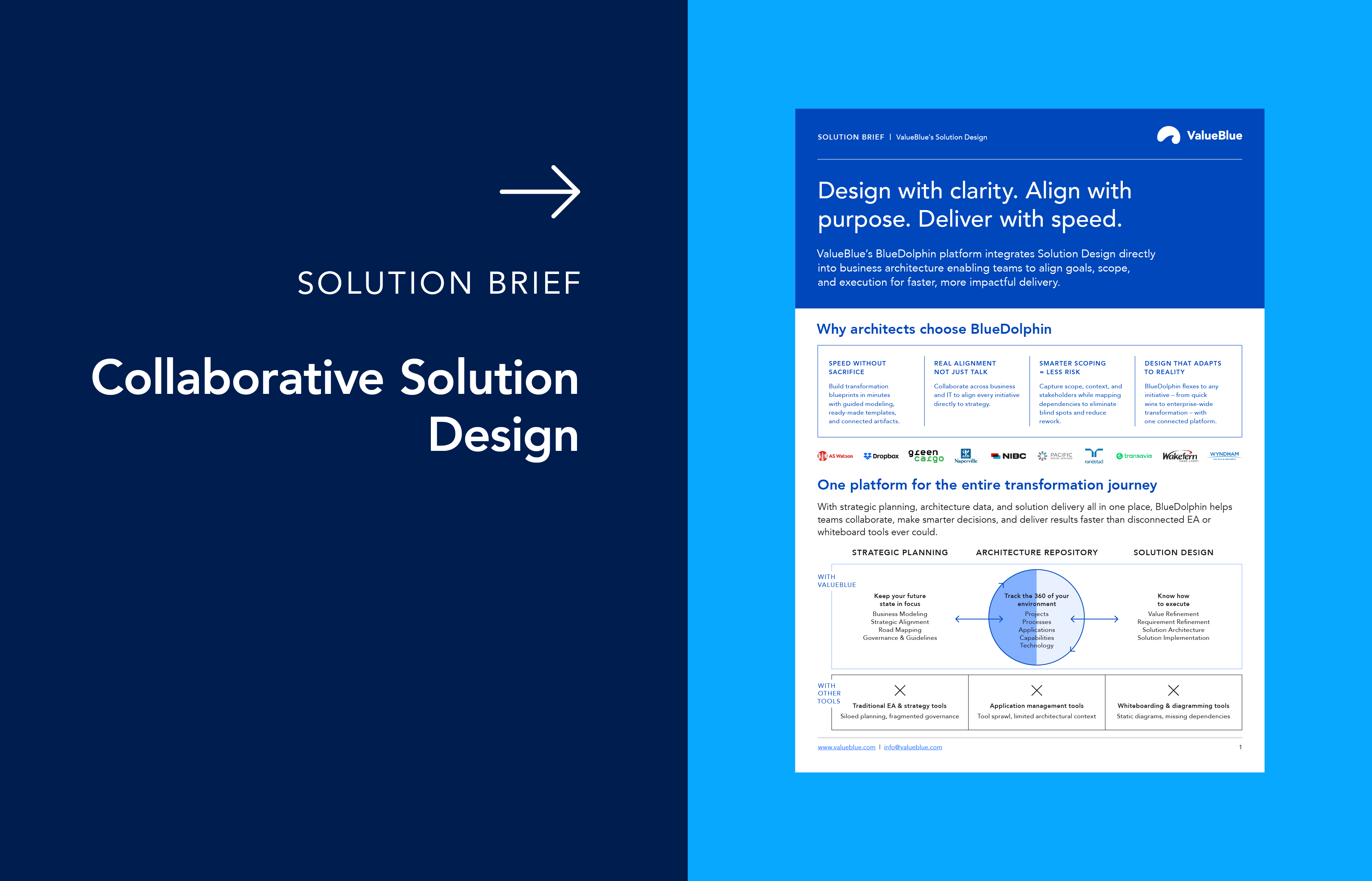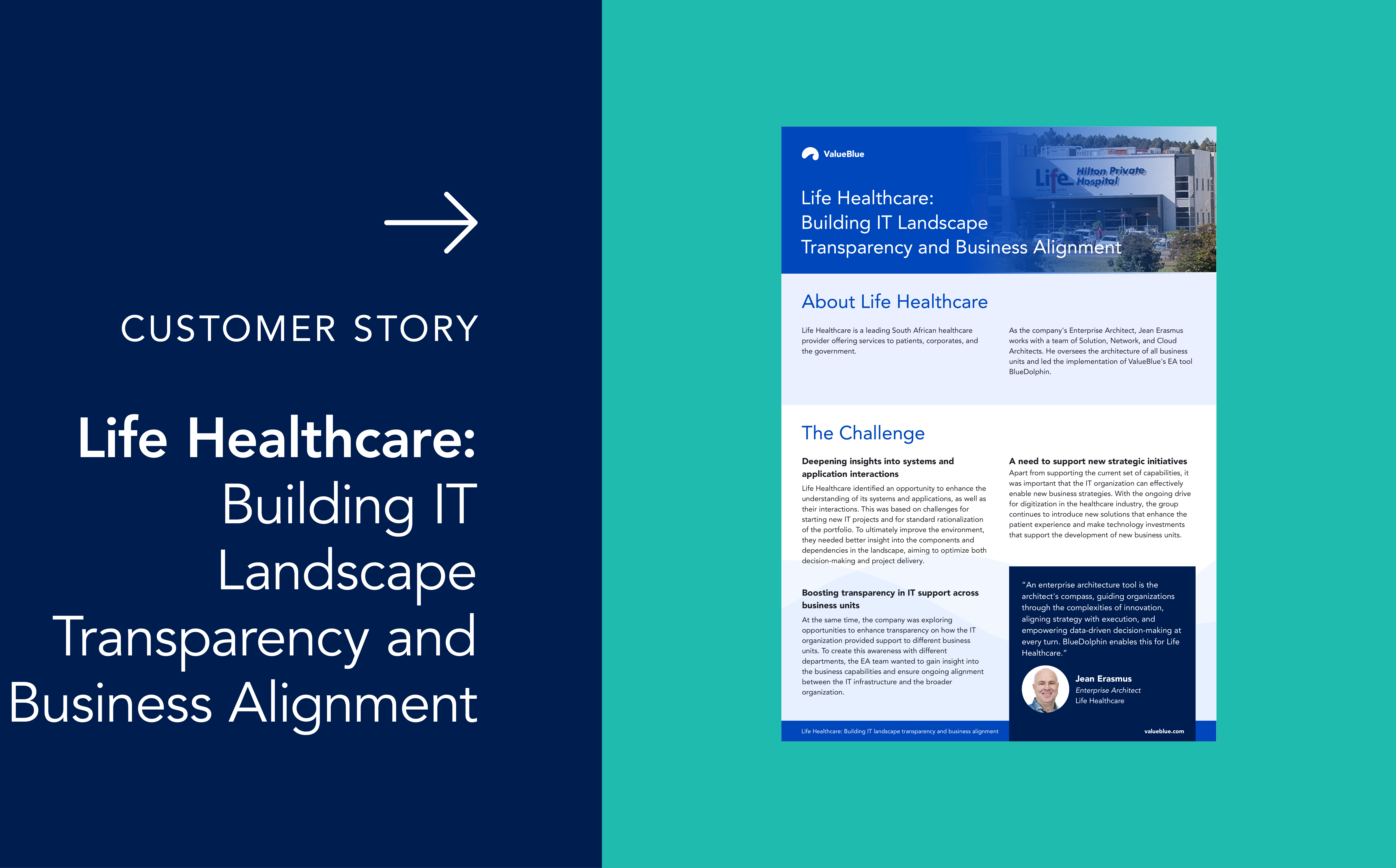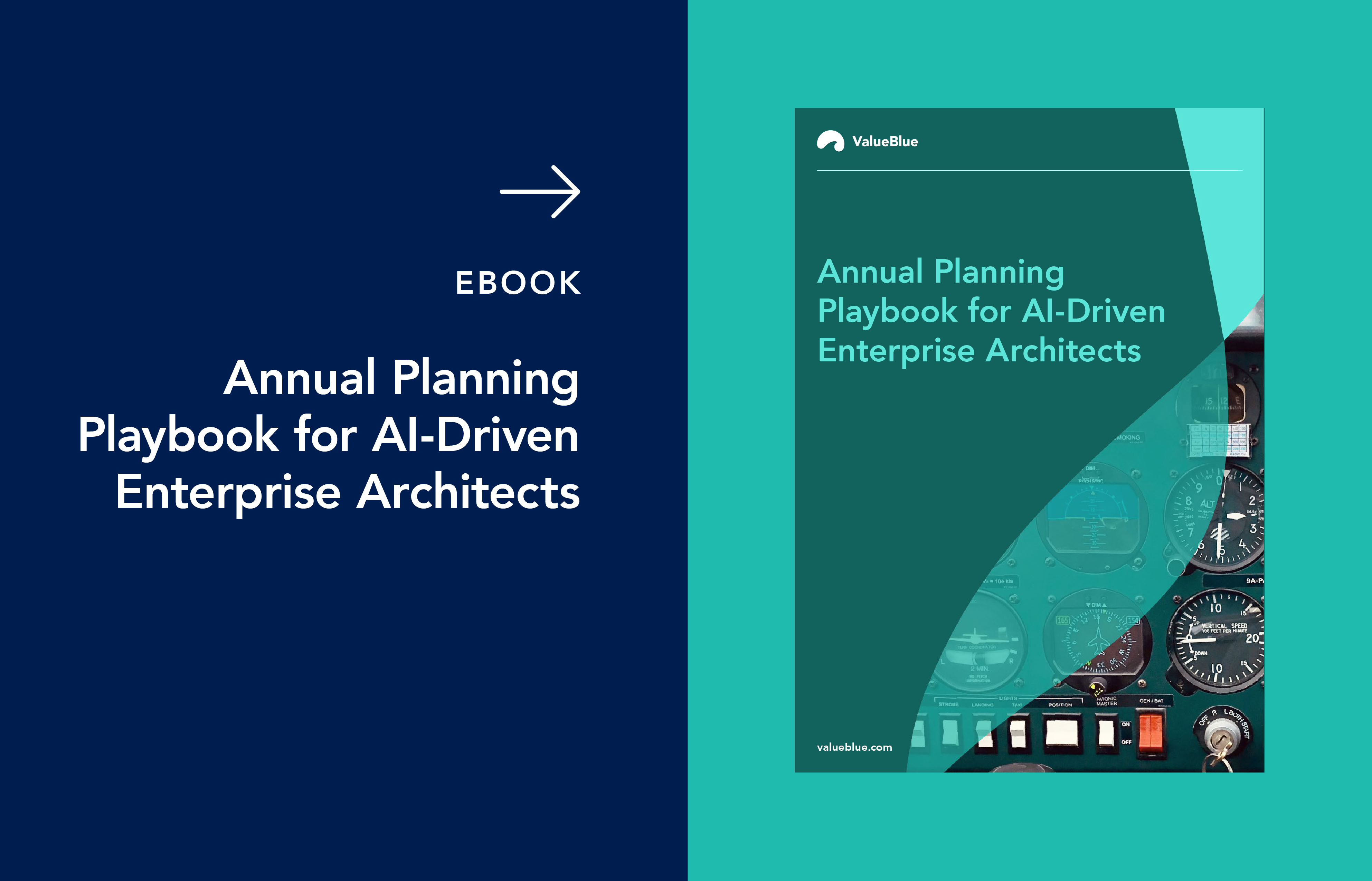Beat the Windows 10 Deadline with Enterprise Architecture
Windows 10 support will end on October 14, 2025. For many businesses, this is more than just a software update – it’s a seismic shift that puts millions of devices and the organizations that depend on them at risk. With almost half of the world’s desktops still running Windows 10, and a staggering 240 million PCs likely stuck on unsupported hardware, the urgency is clear. The question now is not just how to upgrade, but how to navigate this transition with minimal disruption, maximum value, and an eye on long-term strategy.
Table of contents
- Why the Windows 10 deadline matters
- Barriers to upgrading to Windows 11
- How Enterprise Architecture builds a clear path forward
- Key strategies for US enterprise architects
- Key takeaways
- Get your personalized transition roadmap today!
Why the Windows 10 deadline matters
When Microsoft ends support for Windows 10, organizations face serious consequences. Unsupported systems attract cyber threats, fall out of compliance with regulations, and can quickly become expensive to maintain. In fact, running out-of-date operating systems is a leading cause of data breaches and ransomware attacks seen in recent years.
To put it into perspective, industry analysis shows:
- Windows 10 still accounts for 44–49% of global desktops as of mid-2025.
- Over 240 million PCs worldwide may not be eligible for Windows 11, mainly due to hardware limitations.
This transition isn’t just technical. Costs to upgrade, productivity losses, and ecological consequences of disposing of obsolete hardware all add up, forcing leaders to look for smarter solutions. Increasingly, these “smarter solutions” include not just upgrading to Windows 11 but considering open-source alternatives like Linux. With robust community support, modern user interfaces, and proven reliability even on older hardware, open source is shifting from a niche choice to a mainstream enterprise strategy.
Barriers to upgrading to Windows 11
Upgrading to Windows 11 is not just a technical checkbox – it’s a decision with far-reaching business implications. The most immediate and obvious issue is strict hardware compatibility. Many devices in active use – some purchased just a few years ago – lack support for requirements like TPM 2.0, Secure Boot, or the latest CPUs. That leaves entire device fleets suddenly ineligible for upgrade, which is particularly disruptive for industries that rely on stable, long-life PCs or laptops.
But the true complexity emerges when you consider cost and operational impact. The expense of bulk hardware replacement goes beyond sticker price: it includes time spent on procurement, downtime for installation, and resources for migrating user data and revalidating business-critical software.
On top of that, the environmental implications are significant. Refreshing millions of devices on short notice risks creating unprecedented levels of electronic waste. Responsible organizations are now challenged to find recycling and donation partners, or to extend device life with alternative solutions that may not be fully compatible with existing business processes.
This is precisely where open-source alternatives provide game-changing possibilities. Instead of sending perfectly functional computers to landfills, organizations can install modern Linux distributions such as Ubuntu, Linux Mint, or openSUSE – all designed to run smoothly on hardware that can’t handle Windows 11. These solutions are not just about “making do”; they deliver security updates, modern features, and a user experience increasingly familiar to Windows users – all without licensing fees or forced hardware upgrades.
Learn actionable steps to turn your IT landscape 
into a source of financial strength!
Download our free eBook and learn:
- How to increase visibility into your IT spend and identify inefficiencies.
- How to identify, assess, and eliminate redundant or low-value apps.
- How to optimize cloud resources and infrastructure, right-sizing and aligning assets to business needs.
- How to use project portfolio alignment to ensure IT investments support business goals and deliver maximum value.
- How to ensure ongoing governance for sustaining long-term value through recurring visibility and prioritization.
How Enterprise Architecture builds a clear path forward
This is where Enterprise Architecture (EA) proves its value. Rather than treating the Windows 10 deadline as an isolated IT problem, EA helps align technology changes with business vision and long-term priorities. How exactly? It helps your organization:
- Map your entire technology landscape, pinpointing which systems are critical and which can be retired, migrated, or switched to open source.
- Link upgrade and replacement decisions directly to strategic priorities, ensuring resources go where they matter most and that alternative solutions – like Linux – are evaluated based on business needs, not habits.
- Reduce risk and avoid compliance snags by identifying and addressing the most exposed or sensitive endpoints first – including making informed choices about whether Windows, Linux, or hybrid solutions are best for different teams and workloads.
- Improve collaboration between IT teams, business stakeholders, and procurement, leading to better communication and fewer surprises during transitions.
For example, a healthcare provider can use EA to identify which devices store sensitive patient data and prioritize their upgrade – or migration to a supported and secure open-source OS – well ahead of the deadline. In finance, Enterprise Architecture makes it easier to develop phased, budget-conscious roadmaps anchored in regulatory needs.
Enterprise Architecture also enables scenario planning: evaluating the impact, cost, and feasibility of Linux migration for select user groups, supporting dual-boot environments for the interim, and mapping out application compatibility and retraining plans for staff. As organizations worldwide have shown, moving strategic workloads to open source can save hundreds of thousands annually – not only in licensing costs, but in hardware spend and maintenance.
Key strategies for US enterprise architects
For US-based organizations, the stakes are even greater in highly regulated sectors like government, healthcare, and finance. Enterprise architects in the USA are using several tactics to get ahead of the curve:
- Segmenting device inventories to prioritize assets critical for security and compliance – and identifying which can shift to open source without compromising user experience or business needs.
- Building phased plans that allow for gradual upgrades or migrations, rather than all-at-once replacements – including pilot projects for Linux and other open-source systems on eligible hardware.
- Leveraging bulk purchasing and recycling programs to drive down costs and minimize environmental impact, while also connecting with local open-source user groups and campaigns such as “End of 10” that support transition efforts.
- Using EA-driven analytics to model different scenarios and present business cases to executives – clearly comparing the strategic, financial, and sustainability outcomes of staying with Microsoft, moving to open source, or doing both in parallel.
By planning ahead and being open to alternatives, US enterprises can transform this IT challenge into a modernization springboard – ensuring both compliance and resilience, and taking a leadership stance in digital sustainability.
Key takeaways
- Nearly half of business desktops are still running Windows 10, with many unable to upgrade due to hardware and budget constraints.
- Open-source operating systems, particularly Linux, offer a secure, modern, and environmentally sustainable way to extend the life of existing hardware and avoid the forced obsolescence of unsupported Windows 10 devices.
- Enterprise Architecture bridges the gap between technical urgency and business purpose, ensuring upgrades, migrations, and alternative operating system adoption add real value.
- Organizations that plan now, using EA methodologies, will minimize risk, control costs, and position themselves for future growth – even if a full Windows 11 transition isn’t possible.
Get your personalized transition roadmap today!
Microsoft’s Windows 10 deadline is fast approaching – but the real opportunity is to turn this transition into a strategic advantage for your organization. With Enterprise Architecture, you can navigate the change with purpose, confidently plan for the future, and optimize every decision along the way. Whether your next step is embracing Windows 11 where feasible, migrating critical workloads to open-source platforms, or a hybrid approach, EA provides the foundation for clarity and success.
Ready to transform your Windows 10 transition into lasting business value? Contact our experts today to get your personalized transition roadmap and see how modern Enterprise Architecture can work for you.





